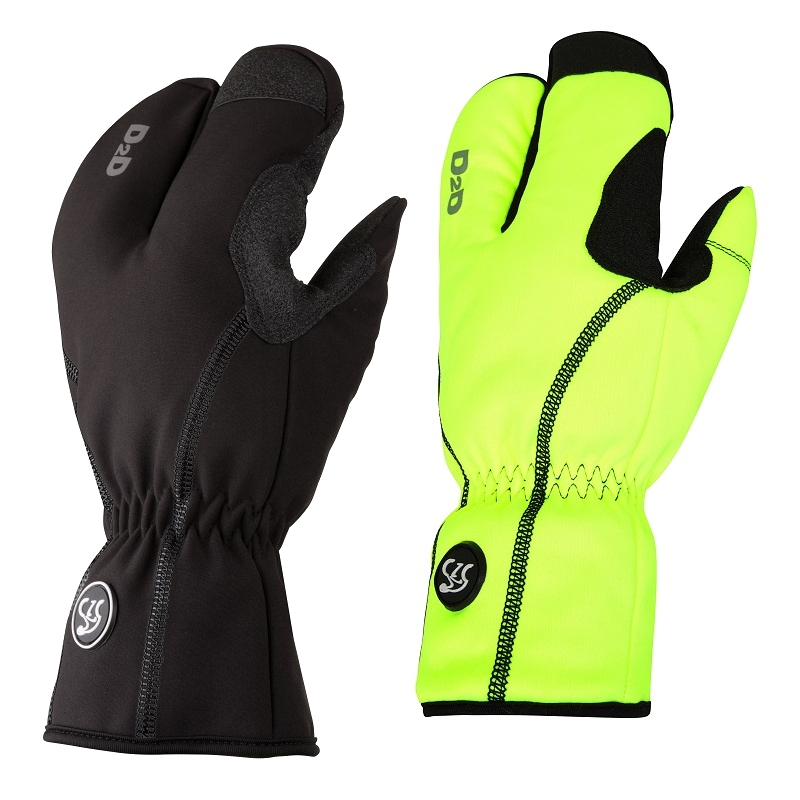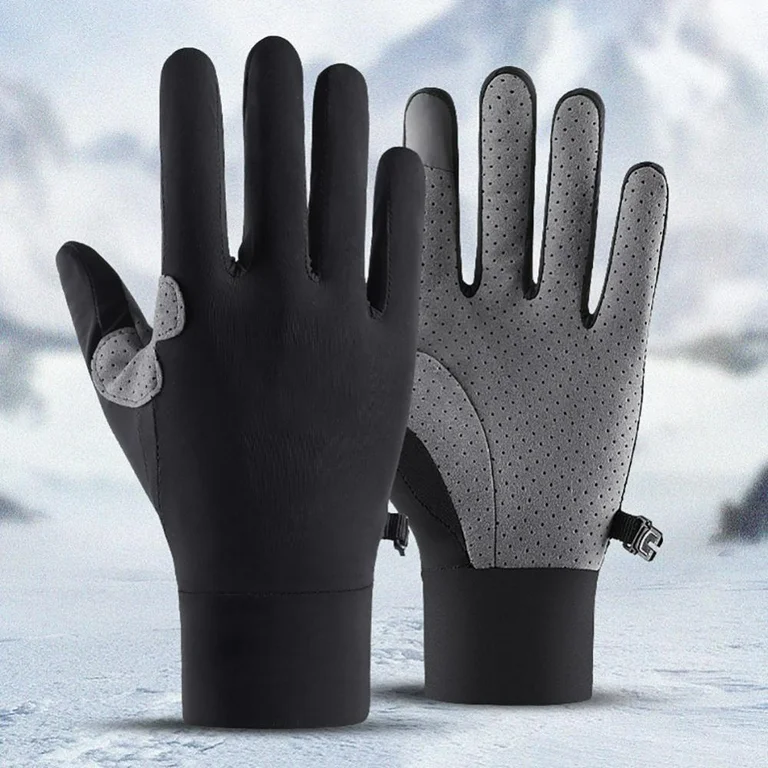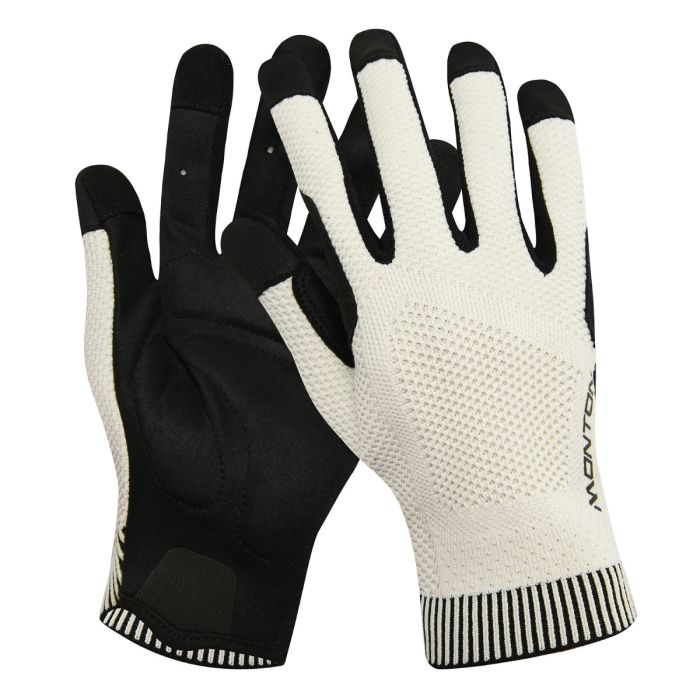Key Features of Winter Cycling Gloves
Cycling gloves for winter! Selecting the right pair of cycling gloves for winter is crucial to a comfortable ride. Key features you should look for include insulation, grip, and adjustability.

Insulation
To keep your hands warm, winter cycling gloves come with different insulation levels. Look for gloves with thermal materials that retain heat without bulkiness.
Grip
Your gloves should offer a good grip to maintain control of your handlebars in wet and cold conditions. Silicone grips on fingers and palms are common in quality gloves.
Adjustability
Adjustable wrist straps help seal in warmth and provide a snug fit. This way, you can prevent cold air from entering the gloves.
By focusing on these key features, your winter rides can be both warm and secure.
Material Considerations for Warmth and Durability
When selecting cycling gloves for winter, materials play a pivotal role, not just for warmth, but also for durability. Here are some aspects to consider.
Fabrics for Insulation
Winter cycling gloves should have interior linings made of materials that trap heat effectively. Fabrics like fleece or thermal knit offer warmth without excess bulk. Look for a material that balances insulation with breathability to avoid sweat buildup during intense rides.
Outer Materials for Durability
The exterior of the gloves should withstand the rigors of winter cycling. Leather or synthetic leather palms provide a sturdy surface for gripping and resist wear over time. For the back of the hand, a robust fabric like polyester or nylon can protect against abrasions and maintain glove shape.

Layering for Enhanced Performance
Consider gloves with a layered construction. An insulating layer for warmth, a membrane layer for moisture control, and a tough outer shell will together enhance the glove’s overall performance. Layered gloves tend to offer better durability and adaptability in various conditions.
Ensure that your winter cycling gloves are made from materials that not only keep you warm but are also built to last through many rides.
Waterproof and Windproof Technologies
When selecting cycling gloves for winter, waterproof and windproof technologies are non-negotiable. These features are essential for keeping your hands dry and protected against the biting cold winds that can make winter cycling uncomfortable or even risky.
Waterproofing
Look for gloves that have a waterproof membrane. This membrane acts as a barrier to keep moisture out. Your hands stay dry, even during sleet or snowfall. Waterproof membranes, like Gore-Tex, are common in high-quality cycling gloves for winter.

Windproofing
Similarly, a windproof design is critical. It can dramatically enhance your comfort. Gloves with a wind-resistant outer layer help to cut out the chilling effect of the wind. This layer should be breathable too, to allow moisture from your sweat to escape.
Seams and Closures
Pay attention to the seams and closures in your gloves. Fully taped seams and secure closures at the wrists prevent water and cold air from seeping in. A good pair of gloves will often have an adjustable strap to tighten the fit around your wrist, enhancing both wind and waterproofing capabilities.
These technologies work together to keep your hands warm and functional despite wet and windy weather conditions. With the right pair, you’ll be able to perform at your best, even in the depths of winter.
Fit and Comfort for Long Rides
Ensuring a comfortable fit is essential for long winter rides. Here’s what to look for in cycling gloves for winter to ensure comfort over hours of cycling.
Ergonomic Design
Select gloves that mirror the natural shape of your hand. An ergonomic design reduces fatigue and maintains hand dexterity.
Padding
Choose gloves with padding in the right places. Adequate padding on the palms cushions against handlebar vibrations, enhancing comfort.
Adjustable Fit
Gloves featuring Velcro straps or elastic bands offer a customized fit. This prevents gloves from being too tight or too loose.
Wrist Coverage
Long cuffs that extend over the jacket sleeves keep out the cold and help locks in warmth.
Size Variety
Opt for brands that provide a wide range of sizes. Getting the right size ensures a snug, not constricted feel.
Remember, the right fit of your cycling gloves for winter is crucial for a pleasant ride. Ill-fitting gloves can lead to numbness and discomfort, negatively impacting your cycling experience.
Touchscreen Compatibility
In today’s connected world, touchscreen compatibility in cycling gloves for winter is a must. It lets you use smartphones or GPS devices without removing your gloves. Look for gloves with conductive fingertips. This feature usually involves a special fabric or coating on the index finger and thumb. With it, you can tap and swipe screens easily.
Stay connected safely, even on the coldest rides, with gloves designed for the digital age. Ensure that the touchscreen function is reliable. It should work consistently, not just when the gloves are new. Some gloves lose touch sensitivity over time, so consider durability too.
Choose gloves that balance warmth with touchscreen utility. They should have enough insulation but not at the cost of losing touch precision. This feature keeps your winter cycling experience both warm and connected.
Reflective Elements for Visibility
For safety during winter rides, visibility is as crucial as warmth and comfort. Reflective elements on cycling gloves for winter increase your visibility to other road users. Here are some points to consider when looking for gloves with reflective features:
Importance of Reflective Materials
Choose gloves with reflective accents, such as stripes or logos, made from high-visibility materials. These reflective elements bounce light back to its source, like car headlights, making you more noticeable in low-light conditions.
Placement of Reflective Details
Effective placement of reflective materials is important. Look for gloves with reflective patches on the back of the hand or fingers. These areas are more likely to catch light, as they naturally move while you cycle.
Safety and Style
Reflective elements can be stylish as well as functional. Modern designs integrate reflective patterns that enhance the glove’s appearance while serving a safety purpose.
Always wear gloves with reflective elements when cycling in the dark or in poor weather to improve your safety. With the right cycling gloves for winter, you can ensure you’re seen and stay warm on all your rides.
Top Trends in Winter Cycling Gloves Design
The design of cycling gloves for winter evolves as technology advances. Here are the top trends to watch for.
Innovative Insulation Materials
New materials offer better warmth with less bulk. They are light yet effective at trapping heat.
Smart Heating Technologies
Some gloves now come with built-in heating elements. These provide adjustable warmth at a touch.
Eco-Friendly Components
Expect more gloves made from sustainable materials. They reduce environmental impact while keeping hands warm.
Aesthetic and Functional Integration
Designs are balancing good looks with high functionality. Contemporary gloves are stylish without sacrificing performance.
Enhanced Flexibility and Articulation
Gloves are becoming more flexible to allow better hand movement. This is crucial for bike control in cold weather.
Multi-Functional Design
Gloves aren’t just for warmth anymore. Many designs integrate other functions, like storage compartments for keys.
Connectivity with Wearable Tech
Some gloves sync with wearable tech, such as fitness trackers. They monitor health metrics while you ride.
Following these trends will help you stay updated with the latest in winter cycling gloves design.
Maintenance and Care for Longevity
Caring for your cycling gloves for winter ensures they last through the seasons. Here’s how to maintain them:
Clean Regularly
Wash your gloves according to the manufacturer’s directions. Often, hand washing in cold water with a mild soap is best.
Dry Properly
After washing, let your gloves air dry. Do not put them near direct heat, as it can damage the materials.
Store Correctly
Keep your gloves in a cool, dry place when not in use. This prevents mold and material degradation.
Check for Wear and Tear
Inspect your gloves frequently. Look for signs of stitching coming loose or material thinning.
Follow Warranty Guidelines
Use warranties for repairs or replacements. Adhere to care instructions to keep the warranty valid.
Remember, well-cared-for gloves provide better performance and comfort. Take the time to upkeep your cycling gloves for winter.



